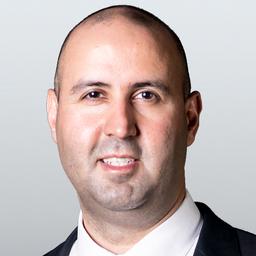The public inquiry into Ottawa’s use of the Emergencies Act to clear convoy protests got a taste of the back-and-forth that can be expected during the commission as one law professor challenged the government’s opening remarks as the commission got underway on Oct. 13.
Robert MacKinnon, general counsel at Justice Canada who is representing the federal government at the inquiry, said in his opening remarks that the evidence the government will be presenting “will show that the invocation of the Emergencies Act was a reasonable and necessary decision, given the escalating volatile and urgent circumstances across the country.”
Referencing MacKinnon’s remarks, Ryan Alford, a professor of law at the Lakehead University who is taking part in the commission as part of the Canadian Constitution Foundation delegation, challenged this argument during his own opening statement.

“A reasonable basis is not necessarily a legal, let alone constitutional basis for assuming unprecedented and emergency powers,” Alford said.
Elaborating on the legal definition, Alford said it didn’t talk about, “tied to serious acts of violence in some fashion,” or, “in conjunction with or somehow associated with,” but, “rather directed toward or in support of the threat or use of acts of serious violence.”
The Public Order Emergency Commission was formed by the federal government as required by the Emergencies Act to examine the justification of its use. Prime Minister Justin Trudeau appointed Paul Rouleau, an Ontario appeal court judge, to head the commission and deliver a report to the Parliament by Feb. 20, 2023.
‘Facts and Events’
The opening day of the commission was spent on Rouleau giving an overview of what the public inquiry involves, and hearing opening remarks from different parties who have a standing in the commission.During his remarks, MacKinnon said government witnesses will be providing the “facts and events” that led to the government’s declaration of a public order emergency.
“They will describe the countrywide threats to the security of Canada; the illegal blockades, the disruption and intimidation experienced by Ottawa residents; the threats at our borders and ports of entry; and the real impacts on Canada’s trade, international reputation, and the economic well-being of Canadians,” he said.
“The government witnesses will outline the deliberate step-by-step process in which careful consideration was given to all the available options, which led to the declaration of a public order emergency as a matter of last resort. The witnesses will also provide evidence on how the measures taken for dealing with the emergency were proportional, effective, and time-limited.”

The convoy protests initially started as a demonstration by truckers opposed to the federal government’s requirement for vaccine mandates, but soon expanded to a wider movement supported by those opposed to various COVID-19 mandates and restrictions. The protesters converged in the nation’s capital in late January, and soon other convoy protests started in other parts of the country, including at border-crossings, which resulted in blockages of cross-border traffic.
The border-crossing blockade at the Ambassador Bridge in Windsor, Ontario, which was the costliest closure with disruption to the shipment of hundreds of millions of dollars worth of goods between Canada and the United States each day, was cleared on Feb. 13, a day before the act was invoked.
‘No Justification’
Brendan Miller, one of the lawyers representing Freedom Corp., which he described as an organization that represents the protesters who were in Ottawa in January and February, read out parts of all four legal definitions of ”threats to the security of Canada“ that would justify the invocation of the act.“It is our view that there was no justification, whatsoever, to invoke the Emergencies Act,” he said.
“One: It could be invoked due to espionage and sabotage. Are you going to hear any evidence about espionage and sabotage? The answer to that is no.
“Two: It could be invoked on the basis of clandestine or deceptive foreign influence, or foreign influence that involves a threat to a person. Are you going to hear evidence about that? The answer to that is no.
“It also could be invoked on the basis of threats or use of acts of serious violence against persons or property. Are you going to hear evidence of violence against persons or property? The answer is no.

“Lastly, it can also be invoked if there is a group or persons trying to destroy or overthrow, by violence, the system of government of Canada. Are you going to hear evidence about individuals trying to do that? The answer is no, ... there was no reasonable and probable grounds to invoke the Emergencies Act, and that the government exceeded their jurisdiction, both constitutionally and legislatively in doing so.”
Christopher Diana, a lawyer representing the Ontario Provincial Police, said in his remarks that the police force already had enough legal tools to deal with the protests without the use of emergencies legislation.
“The OPP has significant experience in responding to protests, blockades, and similar activities. While the emergencies legislation, in particular the provincial legislation, provided useful tools, there was sufficient legal authority in their absence to deal with the protest activities that took place over this period of time,” he said.
David Migicovsky, a lawyer representing the Ottawa Police, said that the police force is usually prepared to deal with different protests, but not the convoy protests of January and February.
“What you will hear is that this protest was unique in Canadian history, the police had little time to prepare,” he said.
The commission’s proceedings are divided into two phases. The first phase, which involves hearing from different witnesses as a fact-finding effort, will end on Nov. 25, after which the second phase, focused on policy, begins, before the commission submits its report in February.





